Red is one of the three primary colors on the color wheel, the others being blue and yellow. All other colors are created by mixing these three colors together in different combinations. This means that basic red cannot be mixed by using any other colors.
However, various tints, tones, and shades of red can be achieved by combining red or variations of red with different colors. Using the other primaries, secondary colors, and complementary colors can give you an endless possibility of variations of red paint.
Color theory is an important part of designing artwork, and understanding how to use a color wheel is essential for any aspiring artist. A color wheel helps us understand the relationships between different colors and can be used to create artwork that is pleasing to the eye.
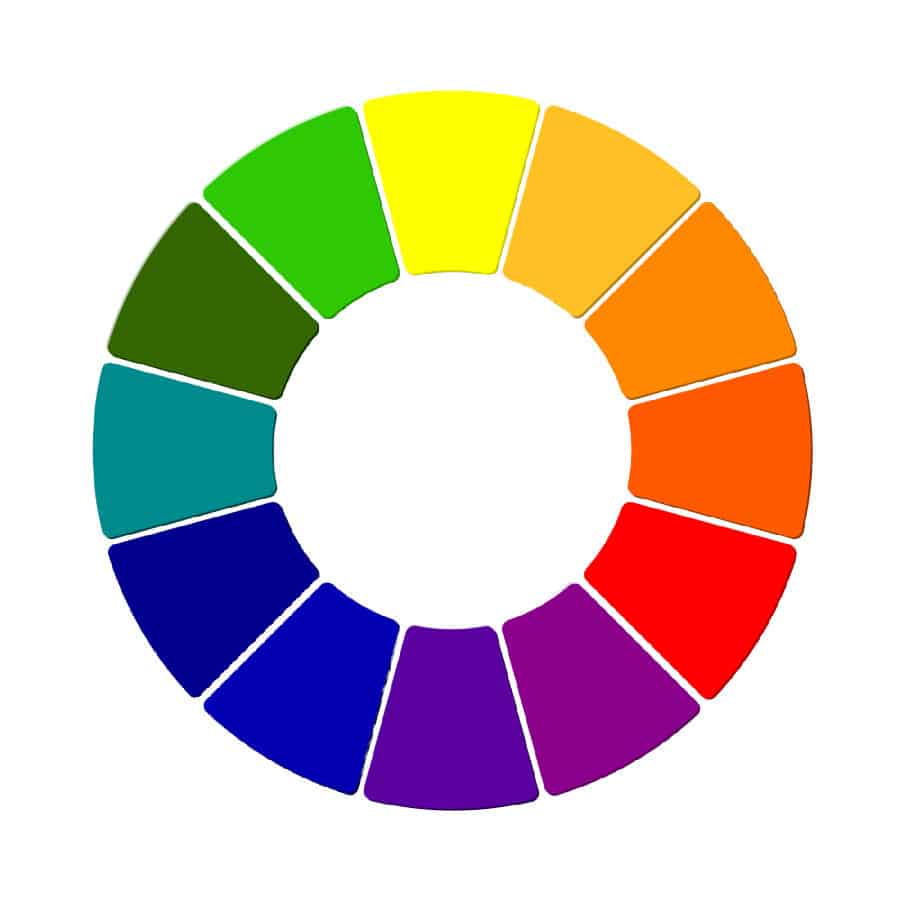
A color wheel consists of primary, secondary, and tertiary colors that can be blended together to create a wide range of hues. By learning basic color theory, you can develop your skills in creating beautiful art pieces.
If you want to know more about color theory, read my post about the basics of color theory to get a better understanding of how colors are achieved.
This post may contain affiliate links. If you click a link and buy, I may receive a small commission. Please see my full privacy policy for details.

Why You Should Learn to Mix Paint
While there are a lot of tubes of red paint you could buy, artists’ paint is expensive. You could have 15 different reds in your art supply and still not have the right color for your painting.
I have a family of redheads and each one of them has a slightly different shade. Learning to mix your own shade of red will save you money and give you more freedom to control the colors in your work.
This article will focus on mixing different shades of red from colors you probably already have in your paint box. Start with a common red color such as Cadmium red or alizarin crimson and mix your new colors using the mixes below.
I primarily acrylic paint, but these paint mixes should work for oil paint or watercolor.
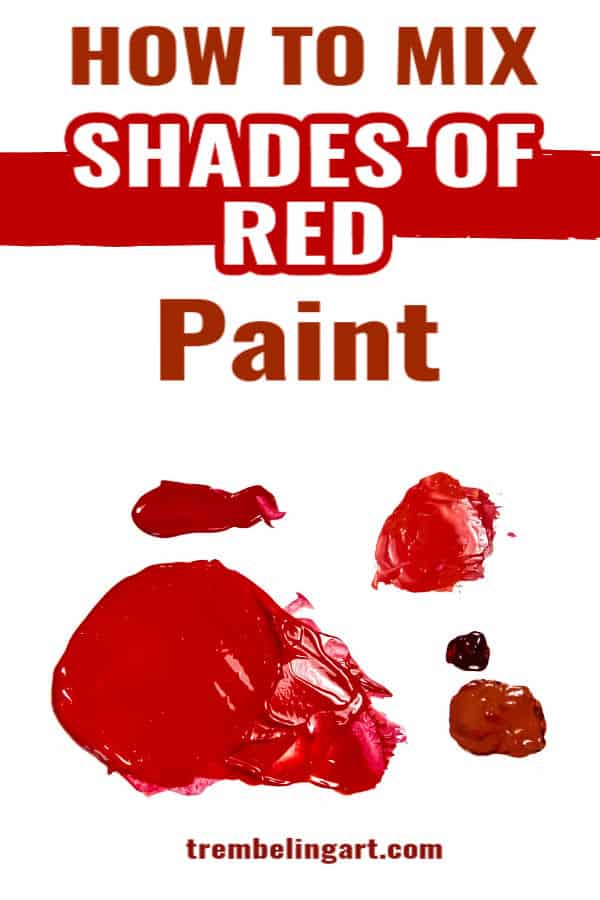
Dark Shades of Red Paint
It is tempting to just add black to the red paint to make a dark red. However, adding black paint can leave you with a dull, almost muddy red. Black can also easily overpower your red colors so if you use black, start with a very tiny amount and build up from there.
To mix a dark red without black, start with one of the basic colors of red and add a little dark blue such as ultramarine blue, mixed with a little burnt umber.
I know you are thinking “red and blue make purple” and that is true, but if you mix a small amount of blue into the red along with the burnt umber, which is a reddish-brown, you should be able to avoid getting a full-blown purple and instead you will create a dark red.
You can also achieve a dark red by mixing in a little Phthalo Green. This will give you a slightly earthier dark red.
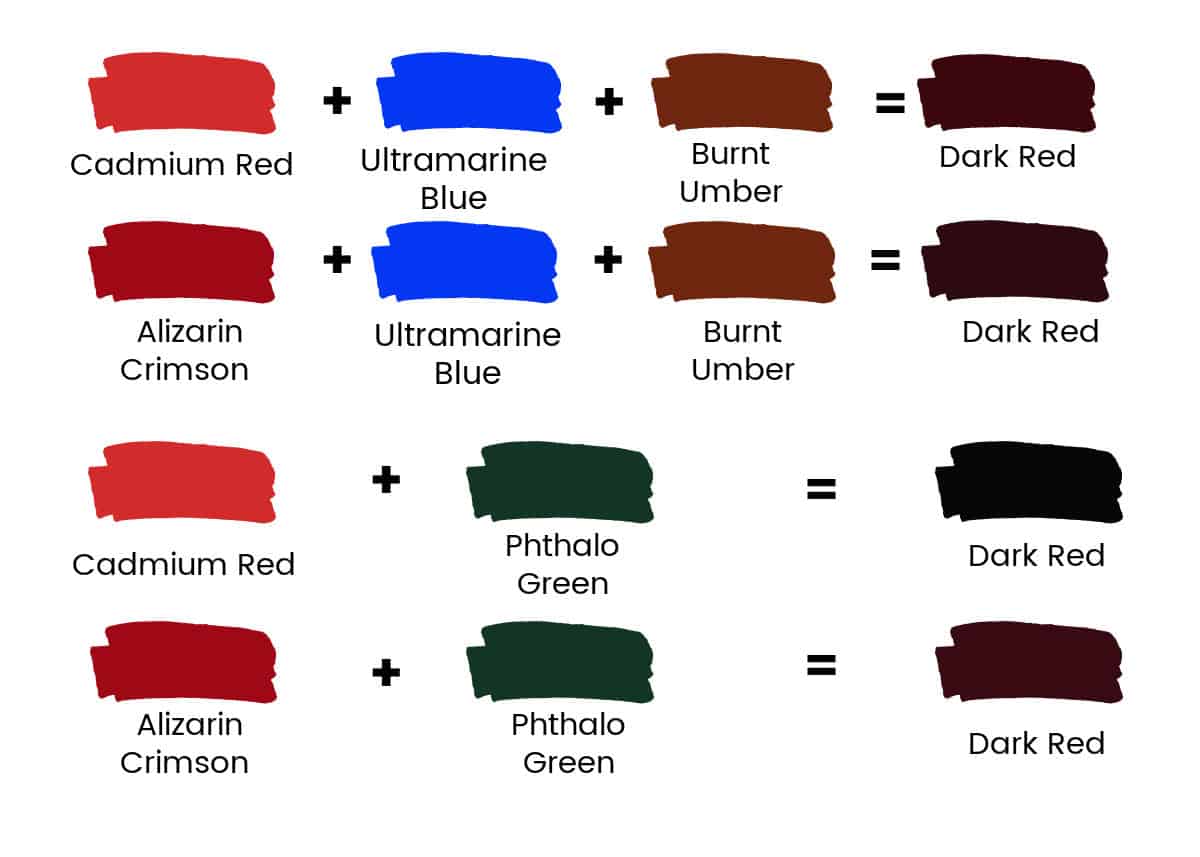
Light Red
You can get a lighter red by adding white paint, but the problem here is that adding white often leads to a pink color. A tiny bit of white can lighten the red, but as shown in the picture below, the more white you add, the pinker the color gets.
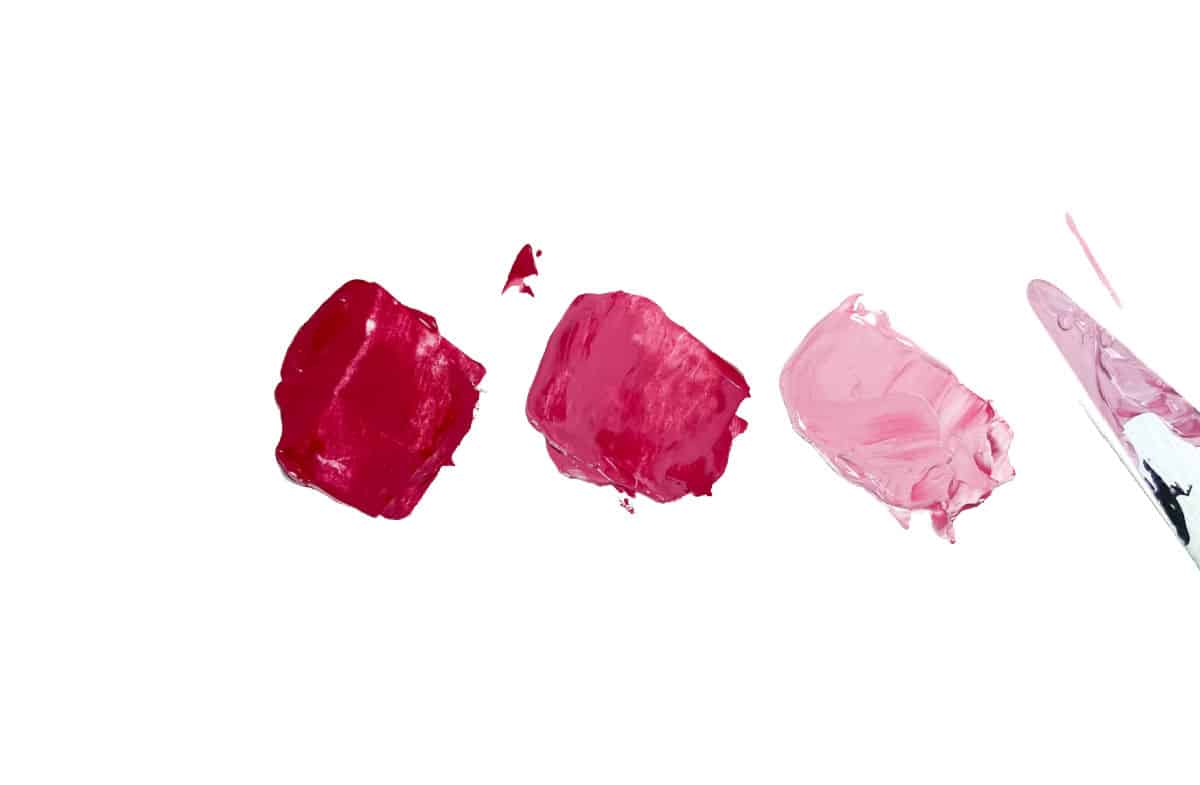
A better option would be to add a little yellow such as Cadmium yellow or lemon yellow. Adding one of these yellows will result in a light color without giving you pink.
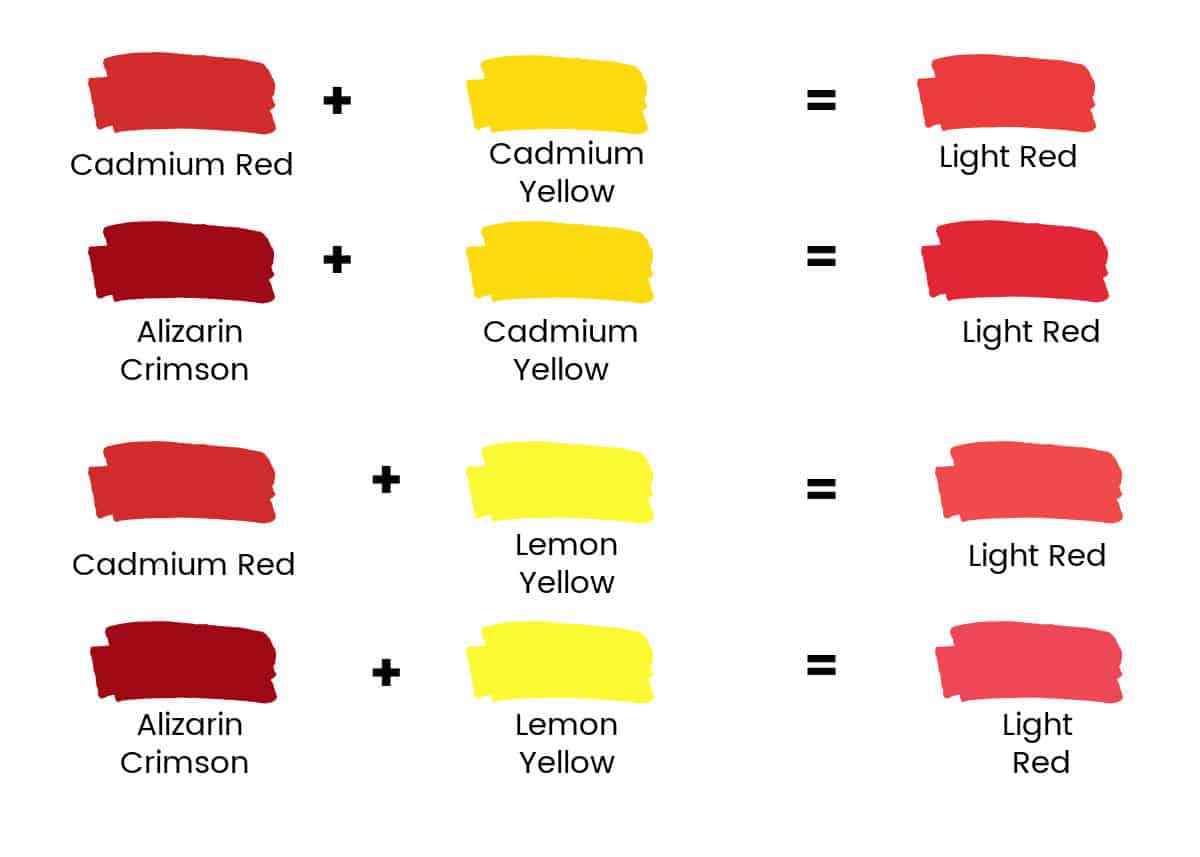
Warm Shades of Red
Warm reds can be mixed by adding warm colors such as cadmium orange, or warm yellows such as cadmium yellow, or yellow ochre to a base red. The cadmium orange and cadmium yellow will give you a warm vibrant red while the yellow ochre will give you a more earthy warm red.
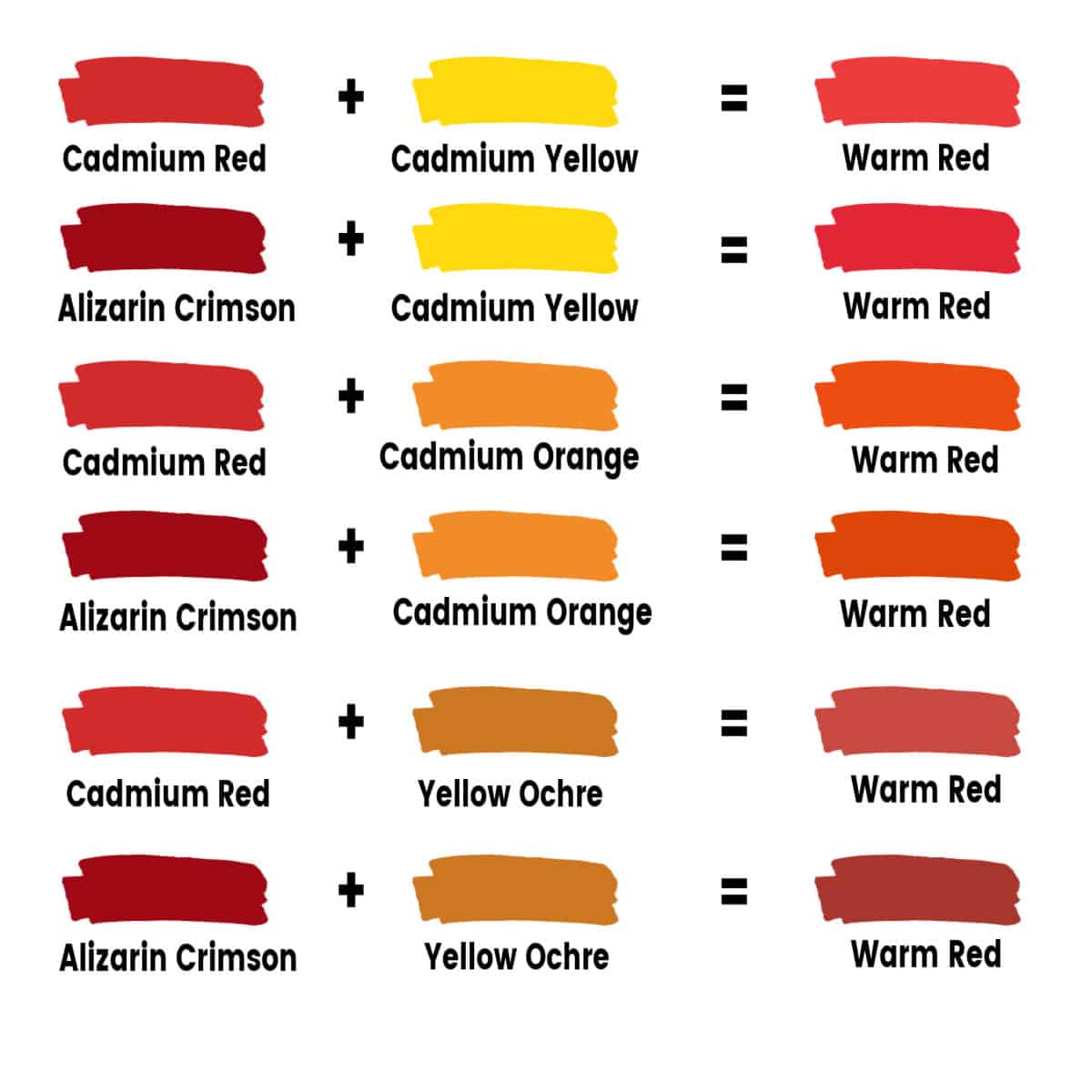
Cool Red
In terms of color temperature, red is considered a warm color. However, you can achieve cool reds depending on how you mix your color.
To get a cool red you can add a cool yellow such as Lemon Yellow to get light cool red.
Adding a cool blue like Ultramarine Blue or Dioxazine Purple to your base red will also give you a cool red. Both Ultramarine and Dioxazine are dark pigments so they will give you a dark color.
Add very little to your red to begin with since you can easily end up with a purple color if you add too much.
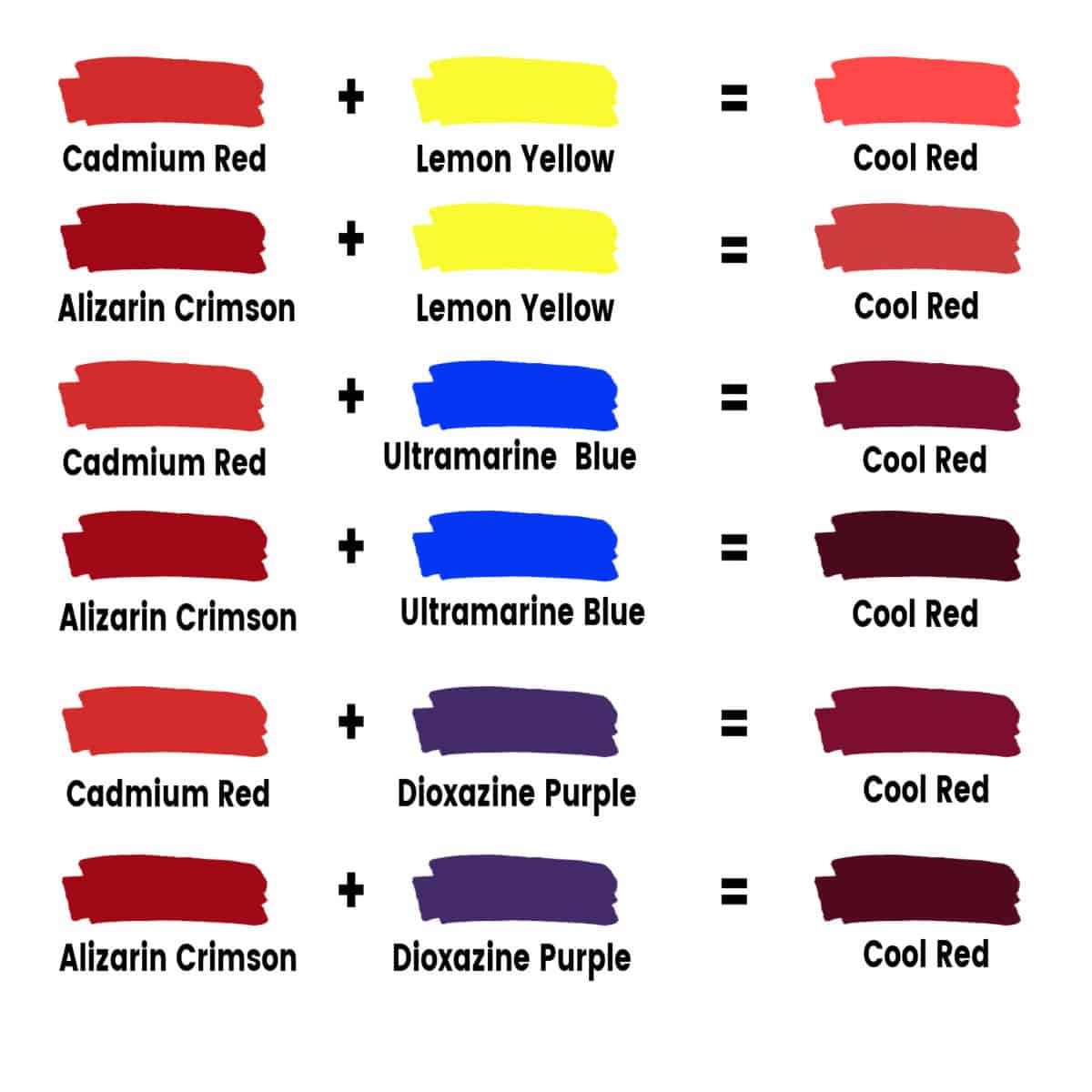
Muted Shades of Red Paint
When you want to mix a muted red you need to add a little of the complement of red.
A complementary color is an opposite color on the color wheel. Complementary colors tone down or mute each other.
To find out more about complementary colors read my post on complementary colors.
The complement of red is green. So to tone down or mute your base red, just add a little green such as Phthalo Green or Hookers Green.
Add as much or as little as you need to get the desired effect but be careful because red and green mixed 1:1 will give you brown. Start off with a little and work from there.
These reds become almost a brownish, or rust-colored red.
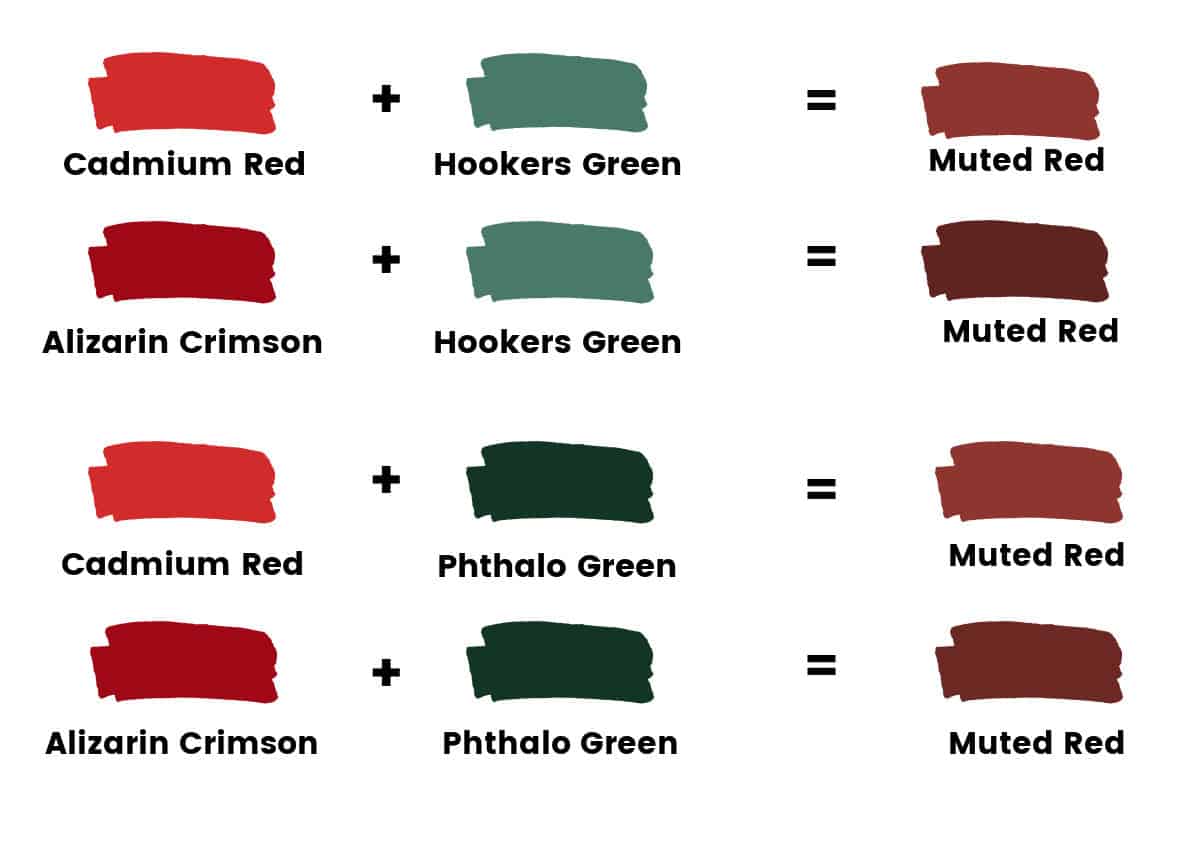
You can experiment with whatever reds you have available to you and add blues, yellows, or greens to see what colors you can come up with.
It is very hard to see the exact color on your computer or phone screen. The colors will be distorted depending on your screen display.
I have included a printable color chart below that you can use as a basic guide.
The best way to be sure you are getting the color you want is to make a swatch card with your own paints and note down what colors you use. That way you will have a reference to guide you whenever you need to mix a red color.
Red Color Mixing Chart
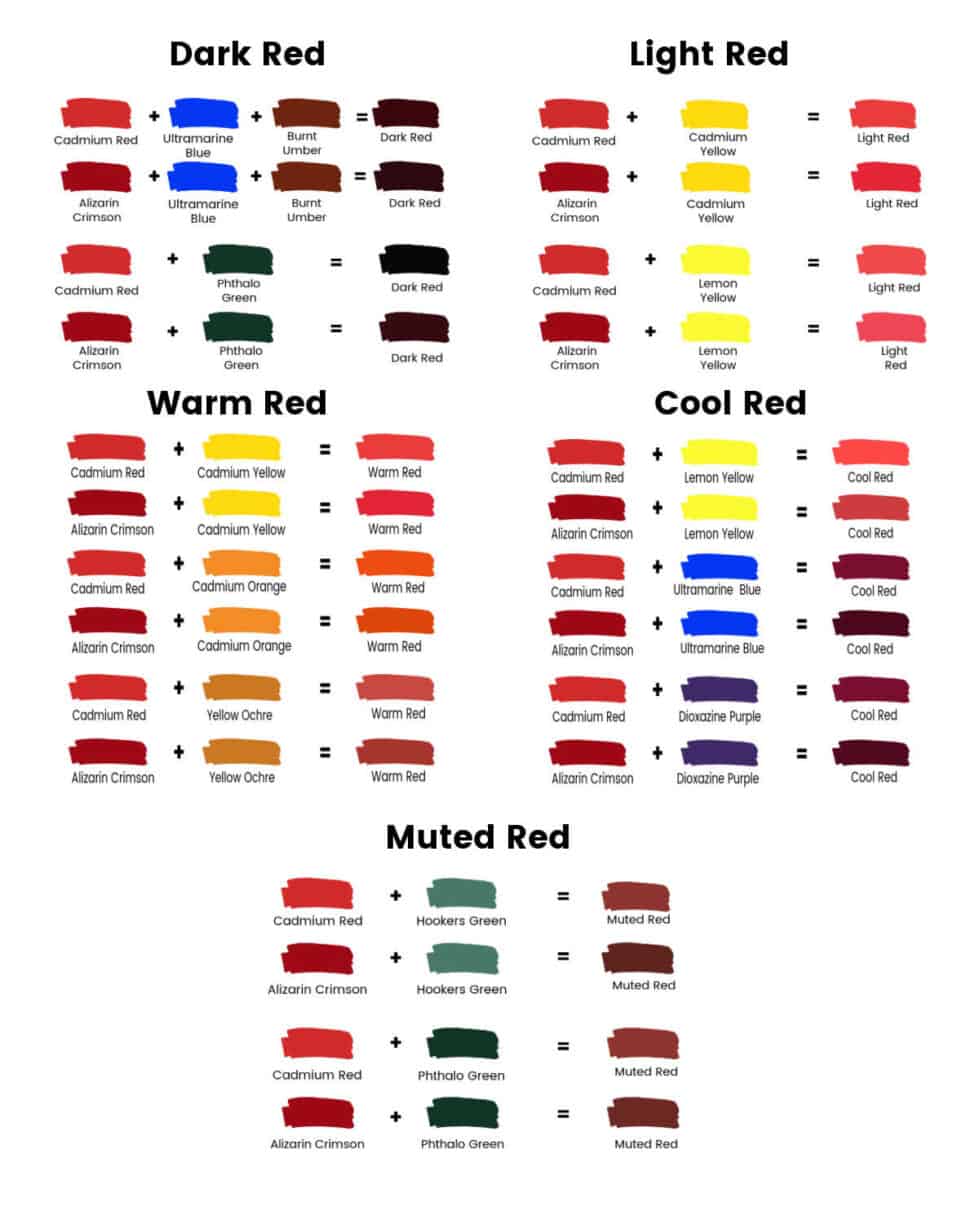
Notes:
Always mix your paint well and test it on your palette before applying it to your artwork.
Remember the amount of paint you use as well as the ratio of each color can significantly impact the final shade of red you create. Start with small amounts of paint and experiment until you achieve the desired result.
If you have questions, you can leave them in the comments below. You can also join our free Facebook group, Trembeling Art Creative Corner, where you can ask questions, post your work and get to know some fantastic artists from all genres and skill levels. 😊
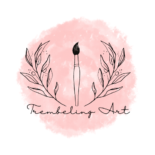
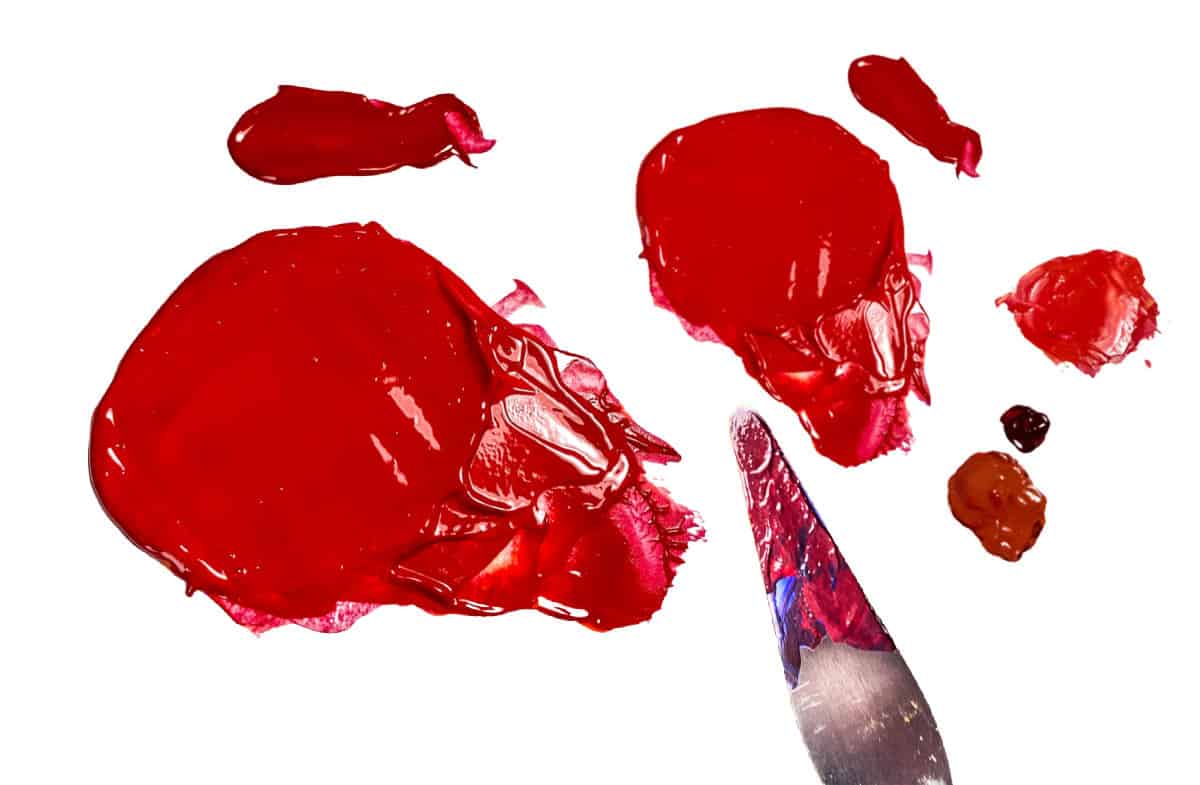
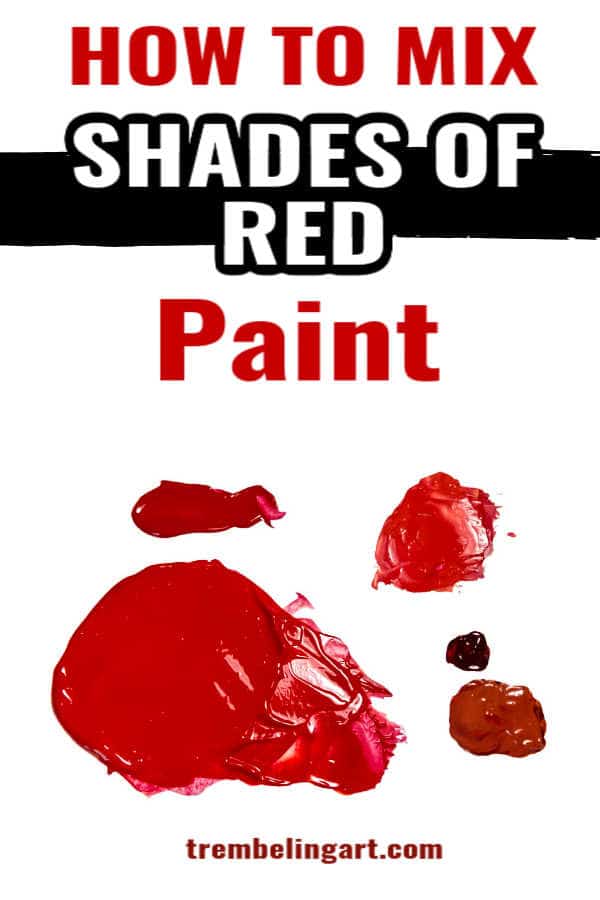
Hello Marilyn. Thanks so much for sharing. I am a beginner and is so nervous about paint mixing. I want to paint a protea with water paint. I will start off with red then the leaves in green. Need some of your advise or help. Thanking you in advance
Awesome! Thank you sharing I love your emails they are full of all kinds of tips an tricks
Have Beautiful Day!